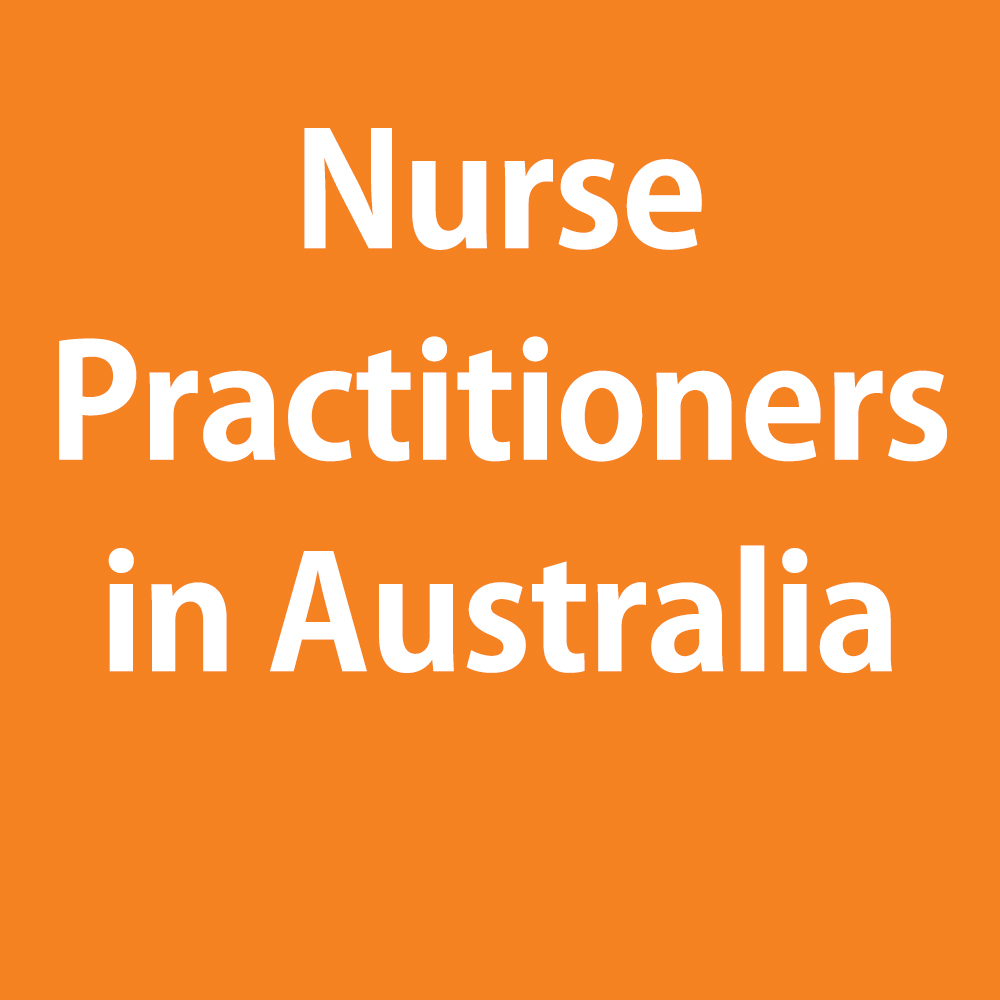In Australia, a Nurse Practitioner (NP) is a highly experienced senior clinical Registered Nurse, who has completed a Masters of Nursing recognised by the Nursing and Midwifery Board of Australia (NMBA), and has met all other NMBA criteria for endorsement as a Nurse Practitioner[1].
While every country is unique, in Australia applicants for the Master of Nursing – Nurse Practitioner need to have a minimum of a Bachelor of Nursing (Degree), postgraduate experience and qualifications, Advanced Practice in their specialty/s, and current unrestricted registration with AHPRA.
The vital piece of the puzzle for a Nurse Practitioner is their scope of practice, which can be unique to each NP, and evolve over time with additional training and experience.
The profession has specific standards of practice that include:
- Standard 1: Assesses during diagnostic capability
- Standard 2: Plans care and engages others
- Standard 3: Prescribes and implements therapeutic interventions
- Standard 4: Evaluates outcomes and improves practice
These standards relate to clinical, research and leadership domains of practice, and build upon the NMBA standards for the Registered Nurse, and Code of Conduct[2].
Australian Nurse Practitioners can work in all areas of the health system. The first NP in Australia in 2000 specialised in emergency care. Additional fields of practice include, and are not limited to; aged care and residential aged care, primary care, paediatrics, mental health, drug and alcohol, oncology, haematology, renal, endocrine, cardiac, perioperative care, women’s health, critical care, chronic disease management, and cosmetics. Nurse Practitioners may work in rural and remote areas, metropolitan areas, private practice, or in public health services. Nurse Practitioners often fill vital roles across the community in healthcare, and develop their scope of practice to fill gaps in existing health services, or enhance services already available.
The role of nurse practitioners around the world
The Nurse Practitioner role around the world continues to evolve while education, credentials and scope of practice for nurse practitioners vary based on each country.
A recent National Institutes of Health included an analysis of the Nurse Practitioner workforce in six countries including Australia, Canada, Ireland, the Netherlands, New Zealand and the USA. It should be noted that in the USA, nurse practitioners are classified as Advanced Practice Nurses (APN) and other countries have a variety of differences in their scope and role title based on each individual nation.
The results showed that the USA had the highest number of NPs per population; the results of the study are outlined below:
NPs and rate per population
- USA (40.5 per 100 000 population)
- The Netherlands (12.6 per 100 000 population)
- Canada (9.8 per 100 000 population)
- Australia (4.4 per 100 000 population)
- Ireland and New Zealand (3.1, respectively)
Studies emanating from the review suggested that Nurse Practitioners are able to provide 67–93% of all primary care services, if Nurse Practitioner numbers in Australia were boosted, thiswould significantly ease the strain on the health system.
Around the world[4], Nurse Practitioners have a varied scope of practice, which could include the authority to prescribe medication, prescribe treatment, refer clients to other professionals and admit patients to hospital.
An international survey[5] reviewed a journal article from the Journal of Nursing Scholarship outlined findings from an international survey that engaged with NPs from thirty-two countries, including:
- NP/APN education was available in 71% of the 31 countries responding to this item, with 50% identifying the master’s degree as the most prevalent credential
- Twenty-three nations had formal recognition of the NP-APN role
- Of these, 48% had licensure maintenance or renewal requirements for the NP/APN, with most requiring continuing education or clinical practice
- The greatest support for the NP/APN role came from domestic nursing organizations (92%), individual nurses (70%), and the government (68%)
It is fair to say that the contribution of Nurse Practitioners to the population and public health system is recognised by a growing number of countries around the world as educational opportunities advance, and their scope of practice continues to expand.
To find out more about becoming a Nurse Practitioner, or for useful contacts for development opportunities for the sector, visit www.acnp.org.au You can also visit this site to find out more on professional support, job opportunities, education and resources for Nurse Practitioners.
[1] https://www.nursingmidwiferyboard.gov.au/registration-and-endorsement/endorsements-notations/guidelines-on-endorsement-as-a-nurse-practitioner.aspx
[2] http://www.nursingmidwiferyboard.gov.au/Codes-Guidelines-Statements/Professional-standards/nurse-practitioner-standards-of-practice.aspx
[3] https://www.ncbi.nlm.nih.gov/pmc/articles/PMC5020757/
[4] https://www.cna-aiic.ca/-/media/cna/page-content/pdf-fr/fs11_role_nurse_practitioner_march_2002_e.pdf?la=en&hash=2AD98EDDBEC7B8C1A4EEA2397BEC70FC7EE0C498
[5] https://www.ghdonline.org/uploads/international_NP.pdf

